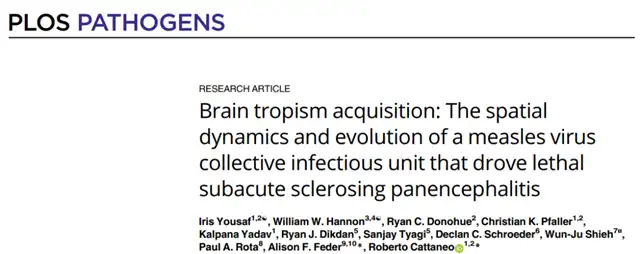Virus Found to ‘Parasitize’ the Brain for a Decade
- Normal Liver Cells Found to Promote Cancer Metastasis to the Liver
- Nearly 80% Complete Remission: Breakthrough in ADC Anti-Tumor Treatment
- Vaccination Against Common Diseases May Prevent Dementia!
- New Alzheimer’s Disease (AD) Diagnosis and Staging Criteria
- Breakthrough in Alzheimer’s Disease: New Nasal Spray Halts Cognitive Decline by Targeting Toxic Protein
- Can the Tap Water at the Paris Olympics be Drunk Directly?
Virus Found to ‘Parasitize’ the Brain for a Decade: Mayo Clinic Study Reveals Survival Mechanism
- Should China be held legally responsible for the US’s $18 trillion COVID losses?
- CT Radiation Exposure Linked to Blood Cancer in Children and Adolescents
- FDA has mandated a top-level black box warning for all marketed CAR-T therapies
- Can people with high blood pressure eat peanuts?
- What is the difference between dopamine and dobutamine?
- How long can the patient live after heart stent surgery?
Virus Found to ‘Parasitize’ the Brain for a Decade: Mayo Clinic Study Reveals Survival Mechanism
When a virus invades, the immune system employs various methods to eliminate it from the body. However, even within the tight surveillance network of the immune system, a very small number of viruses can slip through the cracks, especially in the central nervous system where conventional immune cells are lacking. In such cases, the virus may persist for an extended period and later trigger disease symptoms.
Dr. Roberto Cattaneo, a virologist at Mayo Clinic, has long been studying the pathological mechanisms of the measles virus. His focus has been on understanding how subacute sclerosing panencephalitis (SSPE), a rare complication of measles virus infection, develops. SSPE has an incidence rate of approximately one in ten thousand, with patients experiencing persistent brain infections that may take 5-10 years to progress from the initial viral infection to further spread in the brain.
Recently, Dr. Cattaneo and his colleagues published a paper in PLoS Pathogens, uncovering the mechanisms by which the measles virus continuously expands in the brain.
Collaborating with the Centers for Disease Control and Prevention (CDC), they obtained a precious brain sample from a deceased SSPE patient who had been infected with the measles virus during childhood.

After partitioning the brain into sections, the research team analyzed nearly 15 brain region samples, conducting genomic analyses on each tissue. The results revealed that once the measles virus invades the brain, its genome begins to gradually change, with each replication of the viral genome differing slightly from the previous one. After multiple rounds of replication, the measles virus in the brain exhibits a variety of distinct genomes.
This phenomenon is also observed in some other pathogenic infections, where units with diverse genomic compositions can spread collectively, known as collective infection units. In the brain of the SSPE patient, the measles virus formed two distinct subgroups with significantly different genomes. These subgroups could cooperate to facilitate the virus’s spread from the initial location to new brain regions.
Although the researchers have not yet been able to fully replicate the virus transmission process from a single case sample, they believe that mutations initially occurring in the frontal cortex could accelerate the virus’s outward migration. Dr. Cattaneo emphasized that the next step is to identify specific mutations that give the virus increased transmissibility, as these findings could contribute to developing interventions to prevent SSPE. He also underscored that, compared to post hoc remedies, early vaccination against measles is the most effective means of preventing SSPE.
Virus Found to ‘Parasitize’ the Brain for a Decade: Mayo Clinic Study Reveals Survival Mechanism
(source:internet, reference only)
Disclaimer of medicaltrend.org
Important Note: The information provided is for informational purposes only and should not be considered as medical advice.



